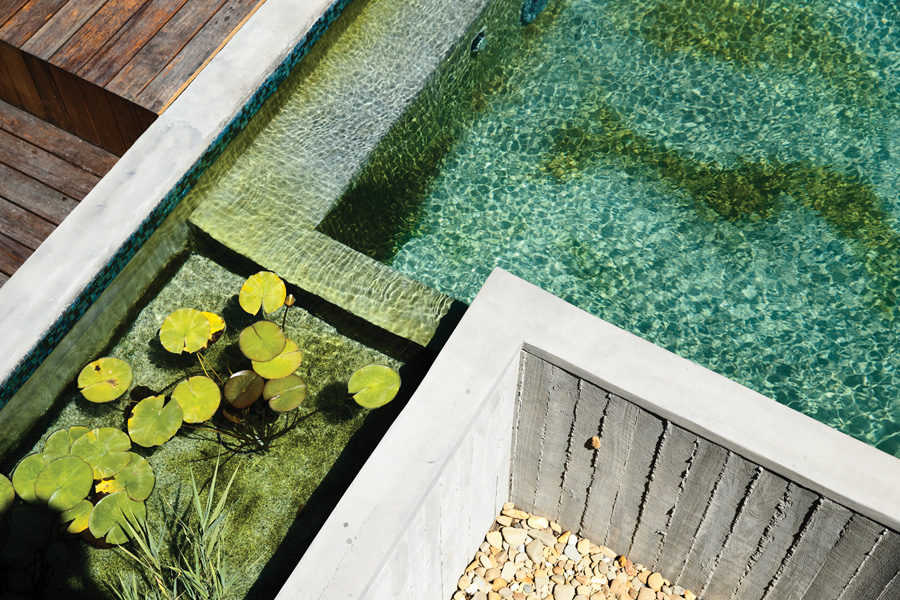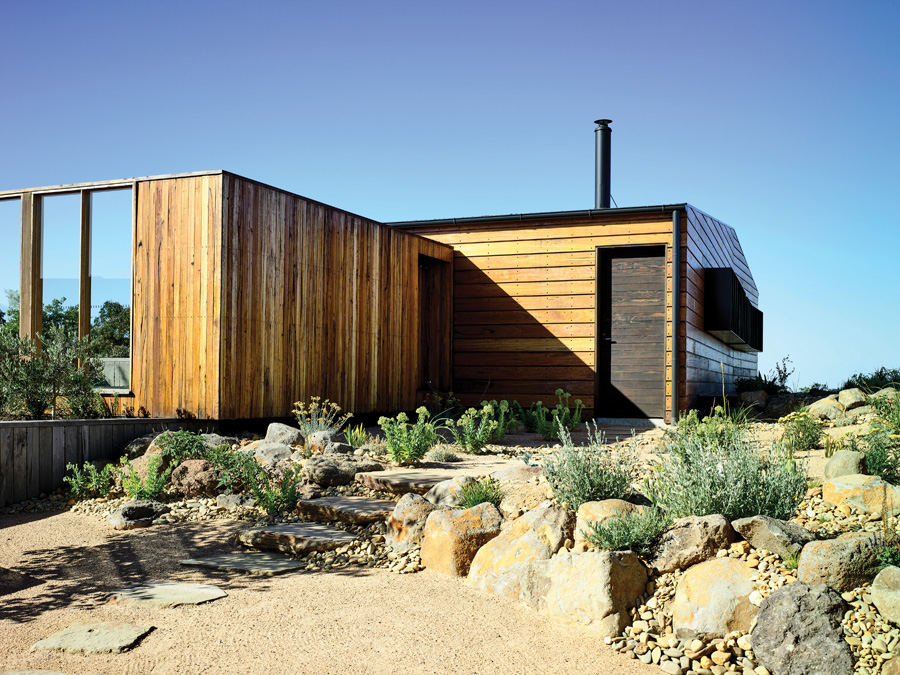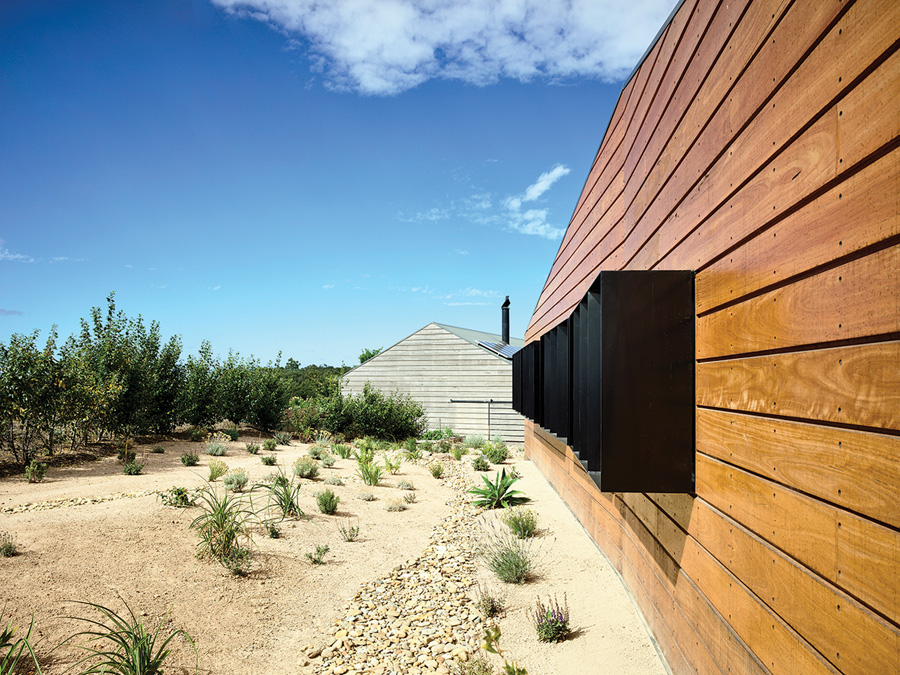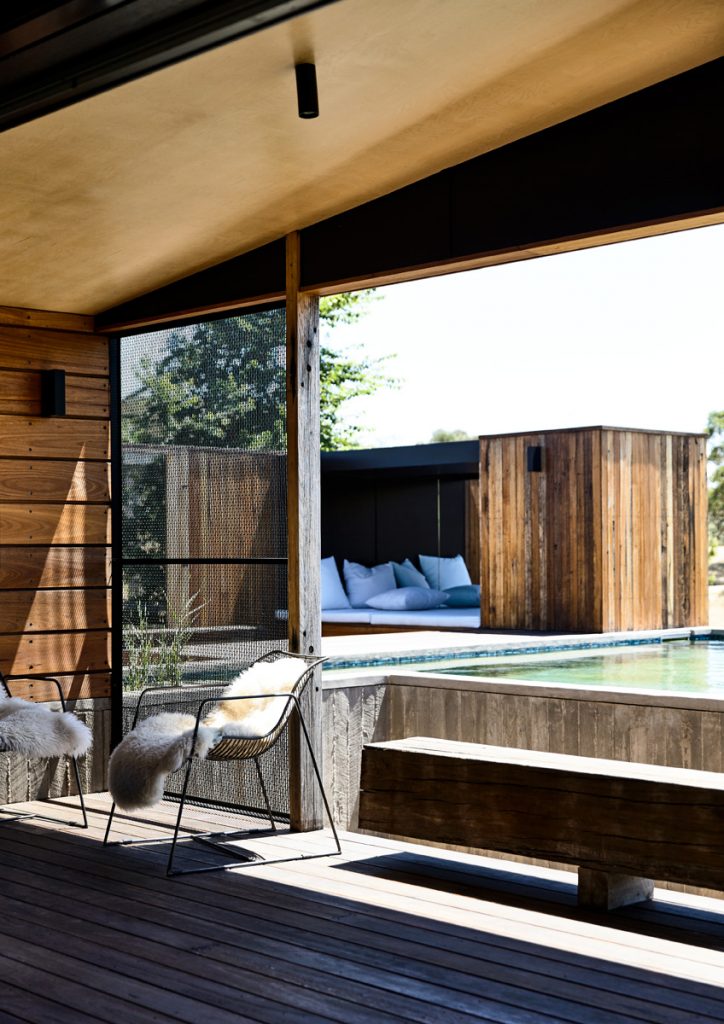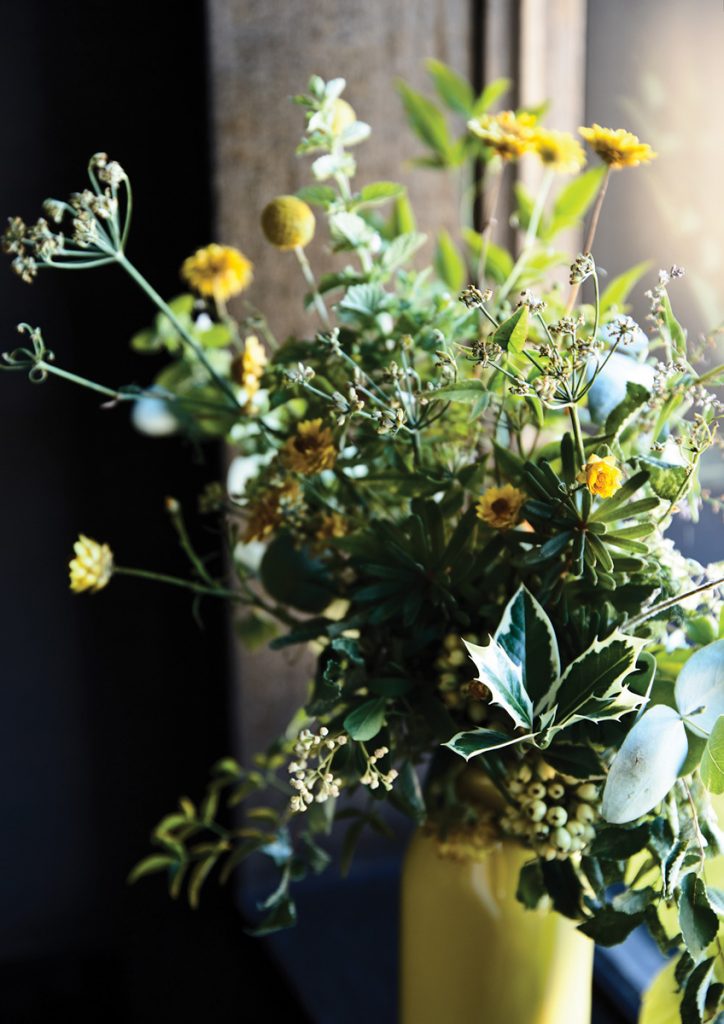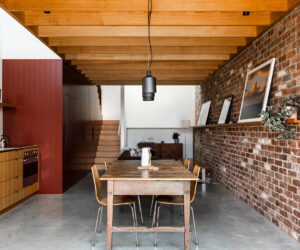Natural Textures
Tim Nicholas embraces harsh conditions and organic elements to create a cohesive garden of diversity and depth.
Some years ago a start was made on landscaping this eight-hectare property in Central Victoria. A sweep of deciduous trees was planted near the newly built house, creating stripes of brilliant colour every autumn, and 700 native trees were sown to screen unwanted views. But recently a new swimming pool and a cottage – which serves as a pool house as well as guest accommodation – were added, and more landscaping was needed.
The group of buildings, including an earth-covered garage, sit high on a ridgeline, commanding views in all directions. But despite the bucolic landscape, conditions are harsh, rainfall is low, the ground is rocky, and the soil is thin. Any plant that manages to get its roots down into the dry, bony ground is often buffeted by winds from the south and south-west.
“Getting even grass to grow here is hard so our brief to the garden designer was to specify plants that would be able to handle the climate and the soil conditions,” says the architect and owner Jerry Wolveridge.
Landscape architect Tim Nicholas was up to the task. While he now lives down on the coast near Geelong, for years he’d lived in the nearby Macedon Ranges and he knows the plants, both native and exotic, that won’t just tolerate the conditions here, but thrive. Indigenous species were an obvious choice, but
Jerry and his partner, fellow architect Christina Theodorou, wanted a palette of exotic plants around the house to provide greater seasonal interest. “It’s a very delicate balance to have the exotic planting they were after but something durable enough to hold together in that environment,” Tim explains. “In the end it was very much like a revegetation project, but instead of planting species from that area I used a range from the Mediterranean zone that could handle that situation. We didn’t do a lot of soil preparation beforehand as I chose plants that I knew were going to grow well in the existing conditions.”
Tim wanted to build on what had been started to make the project hang together and also to resolve what he perceived as the disconnect between the cottage and the main house. The key to his scheme was texture.
“The whole garden is really textural, plus there’s also a fair bit of diversity in terms of form and flowering times as well,” he says. “The landscape around there has that bare dirt feeling and I wanted to play on this ephemeral nature where things come and go – like sedums, which pop out of the bare ground – to give you that sense of wonder. In this garden there is always something happening.”
The new low-level planting around the buildings and the pool create a wind-sculptured, textural mosaic that visually draws the buildings together and blends into the surrounding grassy slopes and undulating hills. Many of the plants have silver-toned foliage that complements the colours of the natural bushland, the greying timbers of the buildings and decks, and the raw off-form concrete walls of the above-ground swimming pool, with its burnished cement interior.
The pool sits on an excavated terrace, its walls forming the pool fence, with the water level at the same height as the previous ground level. “The outlook from within the pool is devoid of any neighbouring houses or buildings,” says Jerry. “It’s just a totally natural outlook.”
The pool is totally natural as well, and was initially filled with pure spring water trucked in from Trentham, which is now mingling with rainwater. A small pond planted with water lilies to one side of the swimming area acts as a regeneration zone: the plants and micro-organisms continually filtering the water, removing impurities and excess nutrients, and negating the need for any chemicals.
Beside the pool there’s an area of lawn for children to play on, with another to one side of the main house. Elsewhere the land between the buildings is filled with low shrubs, perennials, grasses and groundcovers. Pebbled swales, laid out by Jerry to resemble dry river beds, trace lines through the garden.
“When you get storms here they can be very destructive and erosion happens very quickly,” says Tim. “I wanted to catch as much runoff as I could and direct that water either down to the dam or to other planted areas.”
Lying below the house, the dam was another area to be landscaped. Massed plantings of riparian species now cover the banks, helping to settle the dam into the landscape, as well as creating wildlife habitat.
To the east of the house a line of red box (Eucalpytus polyanthemos ) screens views of the pool and the nearby fire pit from a neighbouring property. To the south-west of the house a line of cork oaks (Quercus suber ) form a windbreak that protects a small citrus orchard as well as the house.
“I really love cork oaks,” says Tim. “They are one of my favourite trees – although it’s very hard to say what’s a favourite. I love the idea of having a tortured stand of them that’s really punished by the wind.”
Hill Plain Cottage is available to let as tourist accommodation.
More information at: hillplaincottage.com.au

